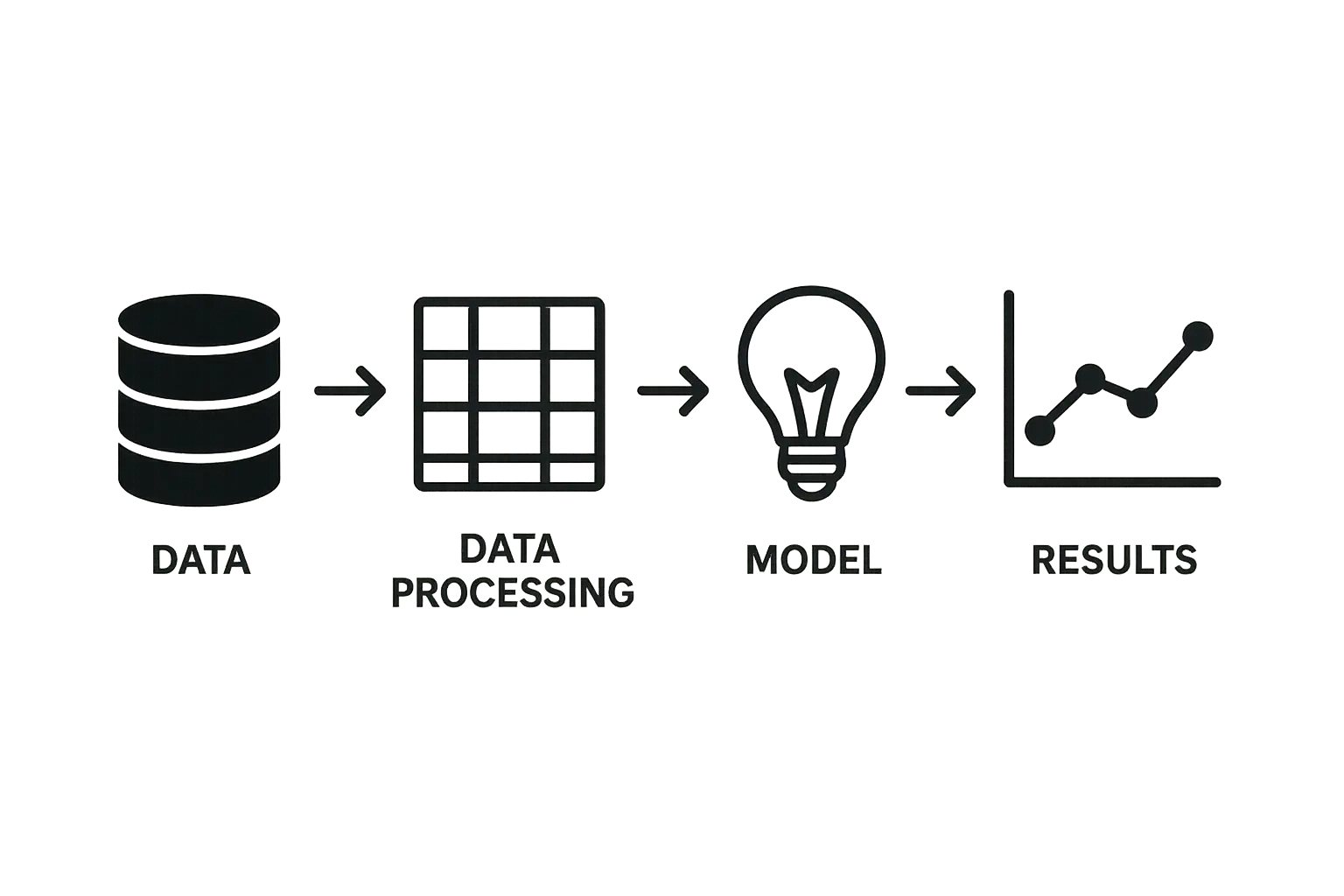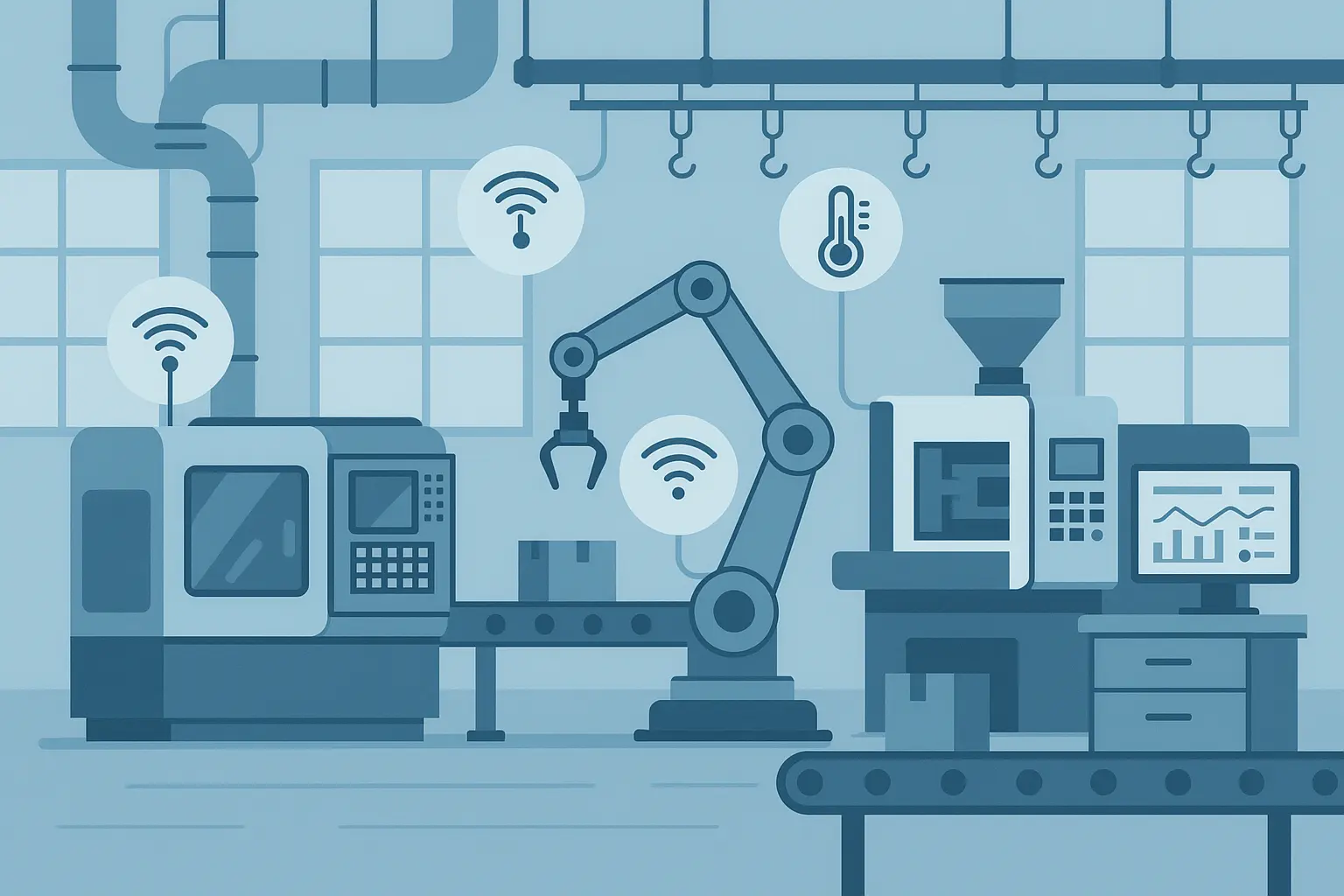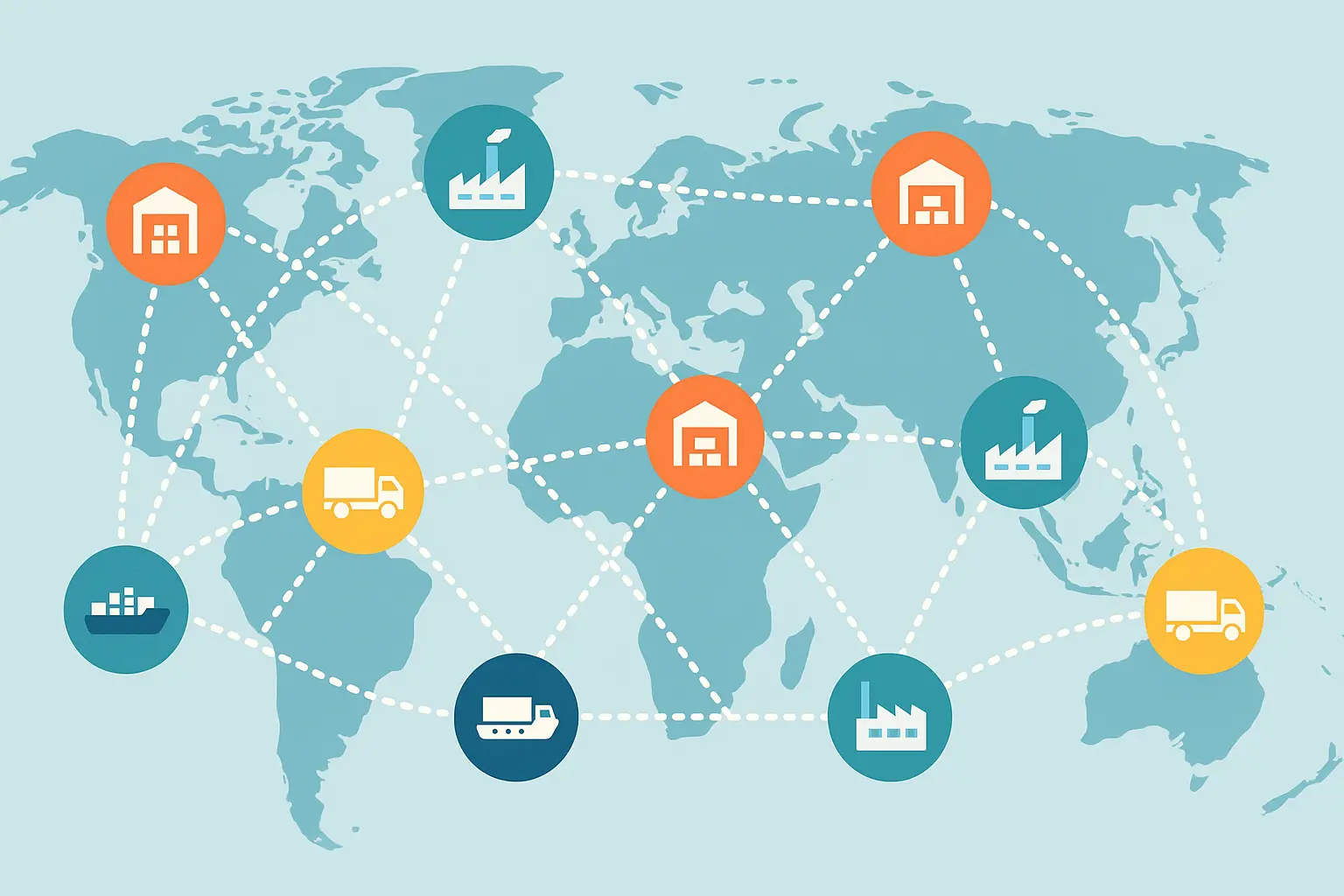PayPal’s fraud detection system achieves a staggering 99.9% accuracy rate in identifying fraudulent transactions, saving users an estimated $2 billion annually. Source: Turing Last year, I was grabbing coffee with my colleague Sarah when her phone buzzed with a fraud alert. She’d just bought gas in Chicago, and somehow the system knew she was supposed to be in Seattle for a conference. What blew my mind wasn’t just that it caught the fraud – it was how it knew her travel patterns better than she did.
That moment made me realize we’re living through a data science revolution that’s reshaping every industry imaginable. From predicting when your car needs maintenance to personalizing your Netflix recommendations, this stuff actually works in the real world and generates massive value.
After spending way too many late nights researching the most impactful data science applications across industries, I’ve compiled 25 data science case studies that showcase the true power of data-driven decision making. Whether you’re looking to advance your career, prepare for interviews, or transform your business operations, these examples will give you the roadmap you need.

Table of Contents
-
Why These Case Studies Matter for Your Success
-
Quick Wins: What You Need to Know Right Now
-
E-commerce & Retail Analytics Powerhouses
-
Customer Lifetime Value Prediction
-
Dynamic Pricing Optimization
-
Recommendation Engine Development
-
Inventory Demand Forecasting
-
Customer Churn Prevention
-
-
Healthcare & Life Sciences Breakthroughs
-
Medical Image Classification
-
Drug Discovery Acceleration
-
Hospital Resource Optimization
-
Clinical Trial Patient Matching
-
-
Financial Services & Fintech Innovations
-
Credit Risk Assessment
-
Algorithmic Trading Strategy
-
Fraud Detection System
-
Robo-Advisory Platform
-
Insurance Claims Processing
-
-
Marketing & Customer Analytics Champions
-
Marketing Mix Modeling (MMM)
-
Customer Segmentation & Personalization
-
Social Media Sentiment Analysis
-
A/B Testing Framework
-
-
Operations & Supply Chain Optimizers
-
Predictive Maintenance System
-
Route Optimization & Logistics
-
Quality Control Automation
-
Supply Chain Risk Management
-
-
Technology & Product Analytics Leaders
-
User Behavior Analytics & Product Optimization
-
Content Recommendation & Personalization
-
Network Security & Anomaly Detection
-
-
How to Choose the Right Case Study for Your Goals
-
Final Thoughts
TL;DR
-
PayPal’s 99.9% fraud detection accuracy demonstrates the real-world impact of advanced data science case study applications
-
25 data science case studies span six critical industries: e-commerce, healthcare, finance, marketing, operations, and technology
-
Each case study includes complexity ratings, business impact assessments, and practical implementation insights
-
High-impact studies like Marketing Mix Modeling and Predictive Maintenance show 20-30% ROI improvements
-
Interview-friendly projects include Customer Churn, A/B Testing, and Recommendation Systems
-
Advanced applications like Drug Discovery and Algorithmic Trading showcase cutting-edge ML techniques
-
Strategic selection criteria help match case studies to career goals and skill development needs
Why These Case Studies Matter for Your Success
Here’s the thing about data science case studies that most people get wrong: it’s not about showing off how complex your neural network is or how many buzzwords you can cram into a presentation. I learned this the hard way when I spent three months building what I thought was an incredibly sophisticated customer segmentation model, complete with ensemble methods and feature engineering that would make any data scientist weep with joy. The business team took one look at it and asked, “So… what do we actually do with this?”
That’s when it hit me – the best case studies aren’t the most technically impressive ones. They’re the ones that solve real problems and make someone’s day easier.
When I evaluate data science case study examples, I look for four key elements that separate the game-changers from the academic exercises.
First, results you can actually see in the bottom line sets apart truly valuable case studies. GE’s predictive maintenance solutions didn’t just sound impressive; they delivered a 30% reduction in unscheduled maintenance and $50 million in annual savings. That’s the kind of concrete value that gets attention in boardrooms and job interviews.
Technical skill development comes next, but here’s what nobody tells you: it’s not about using the fanciest algorithms. I’ve interviewed hundreds of data science candidates, and the ones who impress me most can explain why they chose a simple linear regression over a neural network, not the other way around.
Industry relevance determines whether your skills translate into career opportunities. Customer analytics, fraud detection, and predictive maintenance aren’t niche applications – they’re fundamental capabilities that every data-driven organization desperately needs.
Finally, storytelling potential transforms technical work into compelling narratives. The ability to explain complex analyses in simple terms while showcasing measurable outcomes makes the difference between a portfolio project and a career catalyst.
|
Case Study Category |
Business Impact Range |
Complexity Level |
Interview Frequency |
What They Don’t Tell You |
|---|---|---|---|---|
|
Customer Analytics |
15-40% improvement |
Beginner-Intermediate |
Very High |
Half the time you’re fighting dirty data |
|
Fraud Detection |
95%+ accuracy rates |
Intermediate-Advanced |
High |
Getting from 95% to 99% takes forever |
|
Predictive Maintenance |
20-30% cost reduction |
Advanced |
Medium |
The sensors break more than the machines |
|
Marketing Mix Modeling |
20-30% ROI improvement |
Advanced |
Medium |
Good luck convincing the CMO their favorite campaign doesn’t work |
|
Medical AI |
40-60% efficiency gains |
Advanced |
Low |
FDA approval takes longer than building the model |
|
Financial Risk |
15-25% risk reduction |
Advanced |
High |
Regulators will question every decision |
Quick Wins: What You Need to Know Right Now
Let me be honest – there are no quick wins in data science that actually matter to business. Customer churn prediction might seem straightforward, but by the time you clean the data, handle the class imbalance, and convince stakeholders that your model isn’t just fancy guessing, you’re looking at months, not weeks.
That said, some projects do offer faster learning curves and clearer business narratives than others.

E-commerce & Retail Analytics Powerhouses
E-commerce analytics might seem like the “easy” category, but don’t be fooled. These data science case study applications deal with massive scale, real-time constraints, and customers who’ll abandon your site if your recommendation takes more than two seconds to load.
1. Customer Lifetime Value Prediction
Complexity: Intermediate
Predicting how much revenue each customer will generate sounds straightforward until you realize you’re essentially trying to predict the future of human behavior. This data science case study combines RFM analysis (Recency, Frequency, Monetary) with cohort analysis and machine learning models, but here’s what they don’t tell you: most of your predictions will be wrong, and that’s okay.
The real challenge isn’t building the model – it’s convincing the marketing team to spend more on acquiring a customer based on your prediction of what they might do over the next three years.
Real-World CLV Implementation at Starbucks: Starbucks uses CLV prediction to identify their most valuable customers, but here’s the messy reality: their system analyzes purchase frequency, average order value, seasonal patterns, and mobile app engagement to predict which customers will generate over $1,000 in lifetime revenue. The tricky part? Accounting for the fact that people’s coffee habits change when they move, get promoted, or decide to quit caffeine. Despite these challenges, their high-value customer program still delivers a 25% increase in retention rates among the top tier.
Key Technical Skills: Time series analysis, cohort analysis, survival modeling, customer segmentation
Business Impact: 15-25% improvement in marketing ROI (when the predictions are right)
Data Requirements: Transaction history, customer demographics, engagement metrics
2. Dynamic Pricing Optimization
Complexity: Advanced
Dynamic pricing sounds straightforward until you realize you need to account for competitor reactions. I watched one e-commerce company accidentally trigger a price war because their algorithm kept undercutting a competitor who had their own pricing algorithm. They spent two weeks in an automated race to the bottom before someone noticed.
This comprehensive system analyzes competitor pricing, demand elasticity, inventory levels, and customer behavior to set optimal prices automatically. The technical challenge involves ensemble methods combining linear regression, random forests, and neural networks – think of it like asking three different experts for advice, then combining their opinions to make better decisions.
Key Technical Skills: Ensemble methods, real-time data processing, optimization algorithms, A/B testing
Business Impact: 10-20% revenue increase (assuming you don’t start a price war)
Data Requirements: Competitor pricing, demand patterns, inventory levels, customer behavior
3. Recommendation Engine Development
Complexity: Advanced
Here’s what nobody tells you about recommendation engines: your first three attempts will probably suck. I spent months building what I thought was a brilliant system, only to have users completely ignore the recommendations. Turns out, being technically correct and actually useful are two very different things.
Building a hybrid recommendation system that actually works requires combining collaborative filtering, content-based filtering, and deep learning approaches. The real challenge isn’t making recommendations – it’s solving cold start problems, incorporating real-time behavior, and balancing engagement with business metrics like conversion rate and average order value.
Key Technical Skills: Collaborative filtering, deep learning, real-time systems, evaluation metrics
Business Impact: 20-35% improvement in conversion rates (when users actually click on stuff)
Data Requirements: User interactions, product catalogs, behavioral data, contextual information

4. Inventory Demand Forecasting
Complexity: Intermediate
Accurate demand forecasting prevents both stockouts and overstock situations, but here’s the reality: you’ll never get it completely right. Black Friday will always surprise you, and that random TikTok video that makes your product go viral isn’t in your training data.
This data science case study uses time series analysis (ARIMA, Prophet) combined with external factors like seasonality, promotions, and economic indicators. The practical challenge involves handling multiple time series simultaneously while incorporating business constraints and the occasional “gut feeling” from the sales team.
Key Technical Skills: Time series forecasting, feature engineering, model selection, business constraints
Business Impact: 15-30% reduction in inventory costs (while still running out of the good stuff)
Data Requirements: Historical sales, promotional calendars, seasonal patterns, external factors
5. Customer Churn Prevention
Complexity: Intermediate
Developing early warning systems for customer churn sounds simple until you realize that sometimes customers leave for reasons that have nothing to do with your product. Maybe they moved, got a new job, or simply found something better. Your model can’t predict life changes, but it can identify patterns in behavior that suggest someone’s checking out.
The key insight is that churn prediction isn’t about accuracy – it’s about timing, actionability, and cost-effectiveness. I’ve seen companies with 95% accurate churn models that were completely useless because they identified at-risk customers three days before they left. By then, it’s too late.
Key Technical Skills: Classification algorithms, feature engineering, imbalanced data handling, business metrics
Business Impact: 20-25% reduction in churn rates (for the customers you can actually save)
Data Requirements: Customer behavior, transaction history, engagement metrics, support interactions
Healthcare & Life Sciences Breakthroughs
Healthcare data science case studies are where the stakes get real. These aren’t just numbers on a dashboard – each false negative could mean a delayed cancer diagnosis, and each false positive means unnecessary anxiety for a patient and their family. The pressure to get it right is unlike anything else in data science.
6. Medical Image Classification
Complexity: Advanced
Developing CNN systems for automated medical diagnosis represents the pinnacle of applied deep learning, but here’s what they don’t show in the research papers: the months of debugging why your model thinks every dark spot is cancer. This data science case study focuses on diabetic retinopathy detection from retinal photographs, achieving 95%+ accuracy while meeting stringent regulatory requirements.
A word of warning about healthcare AI: if you think regular machine learning is hard, try building something that needs FDA approval. I know teams that spent two years on regulatory documentation for every year they spent on actual model development.
Key Technical Skills: Convolutional neural networks, medical imaging, interpretability, regulatory compliance
Business Impact: 40-60% improvement in diagnostic speed (when doctors trust it)
Data Requirements: Medical images, clinical annotations, patient metadata, regulatory guidelines

7. Drug Discovery Acceleration
Complexity: Advanced
Machine learning in pharmaceutical research sounds incredibly cool until you realize that “accelerated” drug discovery still takes years, not months. This data science case study combines graph neural networks for molecular representation, NLP for literature mining, and reinforcement learning for molecular design optimization.
I talked to someone who worked on one of these systems, and they told me about spending weeks debugging why their model kept suggesting molecules that looked promising on paper but would explode if you actually tried to synthesize them. Chemistry, it turns out, is more complicated than even the fanciest neural networks anticipate.
Key Technical Skills: Graph neural networks, molecular modeling, multi-modal learning, reinforcement learning
Business Impact: 30-50% reduction in initial screening time (still takes forever)
Data Requirements: Molecular structures, bioactivity data, scientific literature, experimental results
8. Hospital Resource Optimization
Complexity: Intermediate
Predicting patient admission rates and length of stay helps hospitals optimize staffing, but anyone who’s worked in healthcare knows that hospitals are controlled chaos on the best days. Your beautiful forecasting model has to account for everything from flu outbreaks to multi-car accidents to that one surgeon who always runs two hours behind schedule.
This data science case study combines historical data with seasonal patterns and external factors, but the real skill is learning to balance multiple objectives while keeping everyone – patients, staff, and administrators – reasonably happy.
Key Technical Skills: Forecasting, optimization, constraint handling, operational research
Business Impact: 15-25% improvement in resource utilization (when nothing goes wrong)
Data Requirements: Patient admissions, length of stay, staffing levels, seasonal patterns
9. Clinical Trial Patient Matching
Complexity: Intermediate
Matching patients to appropriate clinical trials based on medical history and eligibility criteria should be straightforward, but medical records are a mess. Half the information is buried in doctor’s notes that read like hieroglyphics, and the other half is spread across systems that don’t talk to each other.
This data science case study teaches you to work with complex eligibility criteria while handling missing data and balancing multiple matching objectives. You’ll develop algorithms that consider both medical suitability and practical factors like whether someone can actually get to the trial site.
Key Technical Skills: Matching algorithms, constraint satisfaction, medical data processing, optimization
Business Impact: 30-40% improvement in recruitment efficiency (when the data is clean)
Data Requirements: Patient medical records, trial protocols, eligibility criteria, genetic data
Financial Services & Fintech Innovations
Financial services data science case studies combine high-stakes decision making with regulators who will question every algorithmic decision you make. These case studies demonstrate advanced risk modeling and real-time processing, but they also teach you to document everything because someone will definitely ask you to explain your work later.
10. Credit Risk Assessment
Complexity: Advanced
Building comprehensive credit scoring systems that combine traditional financial data with alternative data sources sounds revolutionary until you realize that your fancy social media analysis might be accidentally discriminating against protected classes. This data science case study integrates social media behavior, transaction patterns, and mobile app usage with conventional credit metrics.
The technical challenge involves ensemble methods and intelligent missing data handling, but the real challenge is ensuring fairness across demographic groups while meeting regulatory requirements. You’ll spend as much time on bias detection as you do on model performance.
ZestFinance’s Alternative Credit Scoring: ZestFinance’s story sounds amazing in hindsight, but I talked to someone who worked there during the early days. They told me about the months of debugging why their model was flagging people who paid their phone bills on time as high-risk. Turns out, there was a data pipeline bug that was treating Sunday payments as “unusual behavior.” Their machine learning models eventually identified creditworthy borrowers who were previously rejected, reducing default rates by 40% while approving 27% more loans, but those breakthrough moments usually come after a lot of head-scratching and coffee.
When evaluating the financial impact of credit risk models, businesses need robust measurement frameworks – similar to how we approach ROI calculation for marketing investments.
Key Technical Skills: Ensemble methods, alternative data integration, fairness in ML, regulatory compliance
Business Impact: 15% improvement in approval rates while maintaining sub-2% default rates
Data Requirements: Financial history, alternative data sources, demographic information, regulatory guidelines
11. Algorithmic Trading Strategy
Complexity: Advanced
Developing multi-factor quantitative trading systems sounds like printing money until you realize that everyone else is trying to do the same thing, and the market has a nasty habit of changing the rules just when you think you’ve figured it out. This data science case study uses reinforcement learning for portfolio optimization while implementing sophisticated risk management controls.
I know someone who built a trading algorithm that worked beautifully in backtesting and made money for exactly three weeks in production before market conditions shifted. The complexity lies in handling multiple data streams while adapting to changing market conditions through online learning, all while managing the exploration-exploitation tradeoff in environments where exploration can cost you real money.
Key Technical Skills: Reinforcement learning, time series analysis, risk management, backtesting
Business Impact: Consistent alpha generation with Sharpe ratios above 1.5 (when the market cooperates)
Data Requirements: Market data, fundamental data, news sentiment, macroeconomic indicators

12. Fraud Detection System
Complexity: Intermediate
Look, I’m not going to sugarcoat this – building a fraud detection system that actually works is incredibly hard. For every success story like PayPal’s 99.9% accuracy, there are dozens of companies struggling to get above 80% without driving their customers crazy with false alarms.
Anyone who’s worked in fraud detection will tell you about the eternal struggle between precision and recall – catching the bad guys without annoying the good customers. It’s like being a bouncer who needs to spot troublemakers without turning away paying customers. This data science case study focuses on building systems that learn from new fraud patterns while minimizing false positives.
Key Technical Skills: Anomaly detection, graph analysis, real-time processing, adaptive learning
Business Impact: 95%+ fraud detection accuracy with minimal customer friction
Data Requirements: Transaction data, network relationships, historical fraud patterns, customer behavior
13. Robo-Advisory Platform
Complexity: Intermediate
Automated investment advice systems use modern portfolio theory and risk profiling to create personalized portfolios, but here’s the thing: most people don’t actually want optimal portfolios. They want portfolios that make them feel good about their decisions, which turns out to be much harder to optimize for.
This data science case study combines financial theory with practical implementation challenges, but the real skill is building systems that can explain their recommendations in ways that don’t require a finance degree to understand.
Key Technical Skills: Portfolio optimization, risk modeling, goal-based investing, regulatory compliance
Business Impact: 60-80% cost reduction in investment advisory services with comparable performance
Data Requirements: Market data, client profiles, risk assessments, regulatory requirements
14. Insurance Claims Processing
Complexity: Intermediate
Automating claims assessment using computer vision for damage evaluation and NLP for document processing sounds efficient until you encounter your first claim that involves a tree falling on a car that was parked in a garage during a hailstorm while the owner was disputing their coverage. Real life is messier than your training data.
This multi-modal data science case study teaches you to integrate different AI technologies into cohesive business solutions while handling the edge cases that make insurance adjusters earn their paychecks.
Key Technical Skills: Computer vision, NLP, multi-modal learning, process automation
Business Impact: 50-70% reduction in processing time with improved accuracy
Data Requirements: Claim images, documents, historical claims, fraud patterns
|
Financial Services Use Case |
Accuracy/Performance |
Implementation Time |
Regulatory Complexity |
Reality Check |
|---|---|---|---|---|
|
Credit Risk Assessment |
85-92% accuracy |
6-12 months |
Very High |
Bias testing takes longer than model building |
|
Fraud Detection |
99%+ accuracy |
3-6 months |
High |
Getting from 95% to 99% takes forever |
|
Algorithmic Trading |
1.5+ Sharpe ratio |
12-18 months |
Medium |
Works until market conditions change |
|
Robo-Advisory |
95% client satisfaction |
8-12 months |
Very High |
People want comfort, not optimization |
|
Claims Processing |
90%+ automation rate |
4-8 months |
Medium |
Edge cases will break your system |
Marketing & Customer Analytics Champions
Marketing analytics represents the most business-focused application of data science case studies, but here’s what I wish someone had told me: the math is the easy part. The hard part is convincing the CMO that their favorite TV campaign isn’t actually driving sales, even though “everyone knows” it’s working. Good luck with that conversation.
15. Marketing Mix Modeling (MMM)
Complexity: Advanced
Comprehensive attribution modeling quantifies the impact of different marketing channels on sales, but getting accurate data from all those channels is like herding cats. TV networks, digital platforms, and print publishers all measure things differently, and somehow you’re supposed to make sense of it all.
This data science case study uses Bayesian methods to handle uncertainty while incorporating adstock and saturation effects. The technical sophistication involves modeling complex interactions between channels, but the real challenge is explaining to stakeholders why their intuition about what’s working might be wrong.
The attribution modeling complexity in MMM mirrors the challenges we face when calculating marketing ROI across multiple touchpoints and channels.
Key Technical Skills: Bayesian modeling, attribution analysis, time series decomposition, optimization
Business Impact: 20-30% improvement in marketing ROI through optimal budget allocation
Data Requirements: Sales data, media spend, competitive intelligence, external factors

16. Customer Segmentation & Personalization
Complexity: Intermediate
Using clustering algorithms for customer segmentation sounds straightforward until you realize that your beautifully distinct clusters don’t actually correspond to any meaningful business segments. I’ve seen segmentation models that identified five perfect clusters of customers who all had basically the same purchasing behavior but different favorite colors.
This data science case study goes beyond basic demographic segmentation to incorporate behavioral patterns, but the real skill is creating segments that are both statistically meaningful and business actionable. Your marketing team needs to be able to do something different for each segment.
Key Technical Skills: Clustering algorithms, behavioral analytics, personalization engines, segment validation
Business Impact: 25-40% improvement in campaign effectiveness through targeted messaging
Data Requirements: Customer behavior, transaction history, engagement metrics, demographic data
17. Social Media Sentiment Analysis
Complexity: Intermediate
Monitoring brand sentiment across social platforms using NLP techniques provides real-time insights, but here’s the reality: most social media mentions are noise. For every genuine complaint or compliment, you’ll wade through hundreds of bot posts, irrelevant mentions, and people using your brand name in completely unrelated contexts.
This data science case study combines text processing, sentiment classification, and trend analysis, but the challenge involves distinguishing between genuine sentiment and noise while providing actionable insights that don’t send your PR team into panic mode every time someone tweets sarcastically about your product.
Key Technical Skills: Natural language processing, sentiment classification, social media APIs, trend analysis
Business Impact: Early detection of brand issues and 15-20% improvement in crisis response time
Data Requirements: Social media posts, brand mentions, engagement metrics, historical sentiment data
18. A/B Testing Framework
Complexity: Intermediate
Designing and analyzing controlled experiments for website optimization sounds simple until you realize that statistical significance and business significance are two completely different things. I’ve seen teams celebrate a “statistically significant” improvement in click-through rates that translated to exactly zero additional revenue.
Netflix runs over 250 A/B tests simultaneously – which sounds impressive until you realize that means they’re also dealing with 250 different ways things can go wrong. I know engineers there who’ve spent entire weekends figuring out why Test #147 was showing statistically significant results that made absolutely no business sense.
Netflix’s A/B Testing at Scale: Netflix’s sophisticated testing framework automatically handles sample size calculations and statistical significance, but here’s what they don’t tell you: most tests fail. One famous test showed that changing artwork thumbnails increased viewing by 30% for certain content types, but they ran hundreds of thumbnail tests to find that winner. Their system processes billions of user interactions daily and can detect conversion rate improvements as small as 0.1%, but detecting them and acting on them are two different challenges.
Key Technical Skills: Experimental design, statistical testing, power analysis, causal inference
Business Impact: 10-25% improvement in conversion rates through systematic optimization
Data Requirements: User interactions, conversion metrics, experimental variants, historical performance
Operations & Supply Chain Optimizers
Operations and supply chain analytics deliver some of the most tangible cost savings, but they also teach you that the real world doesn’t follow your optimization constraints. Trucks break down, suppliers go out of business, and natural disasters don’t check your forecasting model before they happen.
19. Predictive Maintenance System
Complexity: Advanced
IoT-based predictive maintenance for manufacturing equipment uses sensor data to predict equipment failures 2-4 weeks in advance, but here’s what nobody mentions: the sensors break more often than the machines they’re monitoring. I know a manufacturing plant where they spent more time fixing their predictive maintenance system than they saved in prevented downtime.
This data science case study combines time series analysis, anomaly detection, and survival analysis with edge computing for real-time processing. When it works, the results are impressive, but getting there requires patience and a lot of sensor calibration.
Key Technical Skills: IoT data processing, survival analysis, anomaly detection, edge computing
Business Impact: 30% reduction in unplanned downtime and 25% decrease in maintenance costs
Data Requirements: Sensor data, maintenance logs, equipment specifications, environmental conditions

20. Route Optimization & Logistics
Complexity: Advanced
Multi-objective optimization for delivery route planning considers distance, traffic patterns, delivery time windows, vehicle capacity, and driver preferences, but real-world logistics is controlled chaos. Your beautiful optimization algorithm has to handle customers who aren’t home, trucks that get stuck in traffic, and drivers who know shortcuts that aren’t in your mapping data.
This data science case study uses genetic algorithms and simulated annealing for optimization, but the real skill is building systems flexible enough to handle the constant changes that define logistics operations.
Key Technical Skills: Multi-objective optimization, genetic algorithms, real-time adaptation, constraint satisfaction
Business Impact: 15% reduction in delivery costs with improved on-time performance
Data Requirements: Route data, traffic patterns, delivery constraints, vehicle specifications
21. Quality Control Automation
Complexity: Intermediate
Computer vision systems for automated defect detection in manufacturing use deep learning models trained on historical defect images, but here’s the challenge: defects are rare, and your model needs to be really good at spotting the unusual stuff while not flagging every minor variation as a problem.
This data science case study focuses on building reliable systems that can identify defects with higher accuracy than human inspectors, but the real test comes when you encounter defect types that weren’t in your training data.
Key Technical Skills: Computer vision, defect detection, manufacturing integration, quality metrics
Business Impact: 40-60% reduction in defect rates with improved consistency
Data Requirements: Product images, defect classifications, production parameters, quality standards
22. Supply Chain Risk Management
Complexity: Intermediate
Early warning systems for supply chain disruptions use news sentiment analysis, weather data, and geopolitical risk indicators, but predicting supply chain disruptions is like predicting the weather – you can see the big storms coming, but the small ones will still surprise you.
This data science case study teaches you to integrate multiple external data sources and develop risk scoring models, but the real skill is knowing which risks to worry about and which ones to accept as part of doing business.
Key Technical Skills: Risk modeling, external data integration, sentiment analysis, early warning systems
Business Impact: 25-35% reduction in supply chain disruption impact through proactive management
Data Requirements: News feeds, weather data, supplier information, geopolitical indicators

Technology & Product Analytics Leaders
Technology and product analytics focus on optimizing user experience, but here’s what they don’t teach you in school: users are unpredictable. Your carefully designed user flow will be ignored, your engagement metrics will be gamed, and someone will always find a way to use your product in ways you never intended.
23. User Behavior Analytics & Product Optimization
Complexity: Advanced
Comprehensive product analytics platforms track user journeys and identify friction points through clickstream analysis, cohort analysis, and funnel analysis, but the real challenge is figuring out which metrics actually matter. I’ve seen teams obsess over engagement rates while completely ignoring whether users were actually getting value from the product.
This data science case study includes real-time dashboards and automated anomaly detection, but the skill is learning to translate user behavior into actionable product insights that don’t just make numbers go up.
Key Technical Skills: Behavioral analytics, user journey mapping, real-time dashboards, product experimentation
Business Impact: 25% improvement in user retention and 40% increase in feature adoption
Data Requirements: User interactions, product usage, conversion funnels, engagement metrics
24. Content Recommendation & Personalization
Complexity: Advanced
Multi-modal recommendation systems for content platforms handle text, images, and video content using transformer architectures, but here’s a contrarian take: sometimes the “dumb” approach works better. I’ve seen simple “people who liked X also liked Y” systems outperform sophisticated deep learning models because they’re easier to explain and debug.
Cold start problems are addressed through content-based approaches and transfer learning, but the real challenge is balancing user engagement with content diversity to maintain platform health and user satisfaction.
Key Technical Skills: Multi-modal learning, transformer architectures, reinforcement learning, content understanding
Business Impact: 35% improvement in user engagement while maintaining content diversity
Data Requirements: Content metadata, user interactions, content features, engagement metrics

25. Network Security & Anomaly Detection
Complexity: Intermediate
Real-time network monitoring systems use unsupervised learning to detect unusual traffic patterns and potential security breaches, but the challenge is distinguishing between legitimate unusual activity and actual threats. Your system needs to be sensitive enough to catch real problems without crying wolf every time someone works late or accesses the system from a new location.
This data science case study focuses on building systems that can identify novel threats while minimizing false alarms, but the real skill is understanding that security is about managing risk, not eliminating it completely.
Key Technical Skills: Anomaly detection, network analysis, real-time monitoring, security analytics
Business Impact: 50-70% improvement in threat detection speed with reduced false positives
Data Requirements: Network traffic, system logs, security events, baseline behavior patterns
How to Choose the Right Case Study for Your Goals
Strategic case study selection requires aligning your career objectives with projects that offer the best combination of learning value, business impact, and portfolio potential. I’ve seen too many people dive into complex projects that look impressive but don’t match their goals or skill level.
|
Career Goal |
Recommended Case Studies |
Reality Check |
Time Investment |
Portfolio Impact |
|---|---|---|---|---|
|
Career Switching |
Customer Segmentation → Churn Prediction → Recommendation Systems |
Expect 6 months minimum |
3-6 months |
High |
|
Interview Prep |
Customer Churn, A/B Testing, Fraud Detection |
Practice explaining, not just building |
1-2 months |
Very High |
|
Portfolio Building |
Marketing Mix Modeling, Predictive Maintenance, Medical AI |
Choose 2-3 max, finish them completely |
6-12 months |
Very High |
|
Technical Growth |
Sentiment Analysis → Predictive Maintenance → Drug Discovery |
Each level is significantly harder |
12+ months |
Medium to High |
|
Business Impact |
Dynamic Pricing, Credit Risk, Marketing Mix Modeling |
Need domain knowledge, not just coding |
6-18 months |
Very High |
For Career Switchers, start with foundational projects that build core skills progressively. Begin with Customer Segmentation to master clustering and data visualization, then move to Customer Churn Prediction for classification techniques, and finally tackle Recommendation Systems for advanced machine learning concepts. Don’t try to skip steps – each project builds on the previous one.
For Interview Preparation, focus on commonly asked topics with clear business narratives. Data science case study interview questions frequently center around Customer Churn, A/B Testing, and Fraud Detection because they demonstrate statistical thinking, business acumen, and technical skills simultaneously. Practice explaining your approach out loud – most candidates can build models but struggle to articulate their thinking process.
For Portfolio Building, choose 2-3 projects across different industries that showcase diverse skills and measurable impact. Marketing Mix Modeling demonstrates advanced statistics, Predictive Maintenance shows IoT and real-time processing capabilities, and Medical Image Classification highlights deep learning expertise. Better to have three polished projects than ten half-finished ones.
Understanding how to effectively measure and communicate the business impact of your case studies becomes crucial – similar to how we approach marketing budget optimization to demonstrate clear ROI.
For Technical Growth, progress systematically from basic applications to cutting-edge research. Start with Sentiment Analysis for NLP fundamentals, advance to Predictive Maintenance for time series and IoT integration, then tackle Drug Discovery for graph neural networks and molecular modeling. Each step should feel challenging but not overwhelming.
Business Impact Focus should prioritize data analytics case study examples with clear ROI metrics and strategic importance. Dynamic Pricing, Credit Risk Assessment, and Marketing Mix Modeling directly influence revenue and demonstrate your ability to drive business value through data science.
Consider data availability when making your selection. Projects with excellent public datasets (Customer Segmentation, A/B Testing, Sentiment Analysis) allow you to focus on methodology rather than data collection. More specialized applications may require synthetic data or partnerships with organizations.
Before you get excited about building the next great recommendation engine, know that Netflix spends millions on compute resources just to run their models. Your laptop isn’t going to cut it for anything beyond toy datasets. Choose projects that match your available resources.
The key is matching complexity to your current capabilities while pushing your boundaries. Advanced projects like Algorithmic Trading or Drug Discovery require significant domain knowledge and computational resources, while intermediate projects like Inventory Forecasting or Hospital Resource Optimization offer substantial learning opportunities with manageable complexity.

Final Thoughts
Look, I’ve been doing this for over a decade, and I still get excited when a model actually works in production. These 25 data science case studies represent thousands of hours of work by really smart people who made a lot of mistakes along the way.
The difference between a good data scientist and a great one isn’t technical skills – it’s knowing which problems are worth solving and having the patience to solve them right. Some of these projects will frustrate you, some will teach you humility, and if you’re lucky, a few will actually make a difference.
From PayPal’s fraud detection system saving billions in losses to GE’s predictive maintenance reducing downtime by 30%, each data science case study demonstrates the transformative power of data-driven decision making. But behind every success story are the failures, the debugging sessions, and the moments when you realize your beautiful model doesn’t work in the real world.
The diversity across industries shows that data science skills are universally valuable, but the specific applications require domain expertise and business understanding. Whether you’re predicting customer churn, optimizing supply chains, or developing medical AI systems, success comes from combining technical proficiency with deep problem-solving skills and clear communication.
When preparing for data science case study interview questions, it’s essential to understand the technical implementation and the business context – much like how we approach comprehensive analytics audits to ensure data-driven insights translate into actionable business strategies.
For businesses looking to implement these sophisticated data science capabilities, the challenge isn’t technical – it’s strategic. Understanding which problems to solve first, how to measure success, and how to integrate data science insights into existing operations requires experienced guidance and proven methodologies.
At The Marketing Agency, we’ve seen firsthand how data science transforms marketing effectiveness. Our approach mirrors the Marketing Mix Modeling case study, using advanced attribution analysis and predictive analytics to optimize budget allocation across channels – similar to how we help clients understand return on ad spend calculations for maximum campaign efficiency. We combine the customer segmentation sophistication of e-commerce giants with the real-time optimization capabilities of dynamic pricing systems to deliver measurable growth for our clients.
The real magic isn’t in the algorithms – it’s in asking the right questions and caring enough about the answers to do the hard work of getting them right.
Ready to move beyond marketing guesswork and embrace the same data science rigor that drives these industry-leading data science case study examples? We can discuss how to transform your marketing operations with proven data science methodologies that deliver measurable results.



